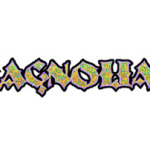Kammy’s Kause
Kammy’s Kause
Chromosome 4p- syndrome or Wolf-Hirschhorn syndrome, is a chromosome disorder due to partial deletion of the short (p) arm of chromosome 4. It is, therefore, also called the 4p- syndrome. Features of the syndrome include midline defects with a scalp defect, widespaced eyes, broad or beaked nose, oral facial clefts (cleft lip/palate); low simple ears with a dimple in front of the ear; small &/or asymmetrical head; heart defects; and seizures (that tends to diminish with age). There is severe to profound developmental and mental retardation. Some patients do learn to walk with or without support and some achieve sphincter control (by day). There is usually very slow progress in development. Most (nearly 90% of the cases of the syndrome are due to de novo (newly occurring) partial deletions of the short (p) arm of chromosome 4. In the remaining 10% or so of cases, one of the parents has a balanced chromosome rearrangement involving chromosome 4p from which the child’s 4p- is derived. Parents of 4p- children should therefore have chromosomes studies themselves. The syndrome is named for the American Kurt Hirschhorn and German U. Wolf who independently found the 4p- chromosome abnormality in the 1960s.













